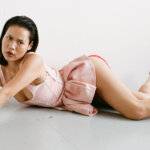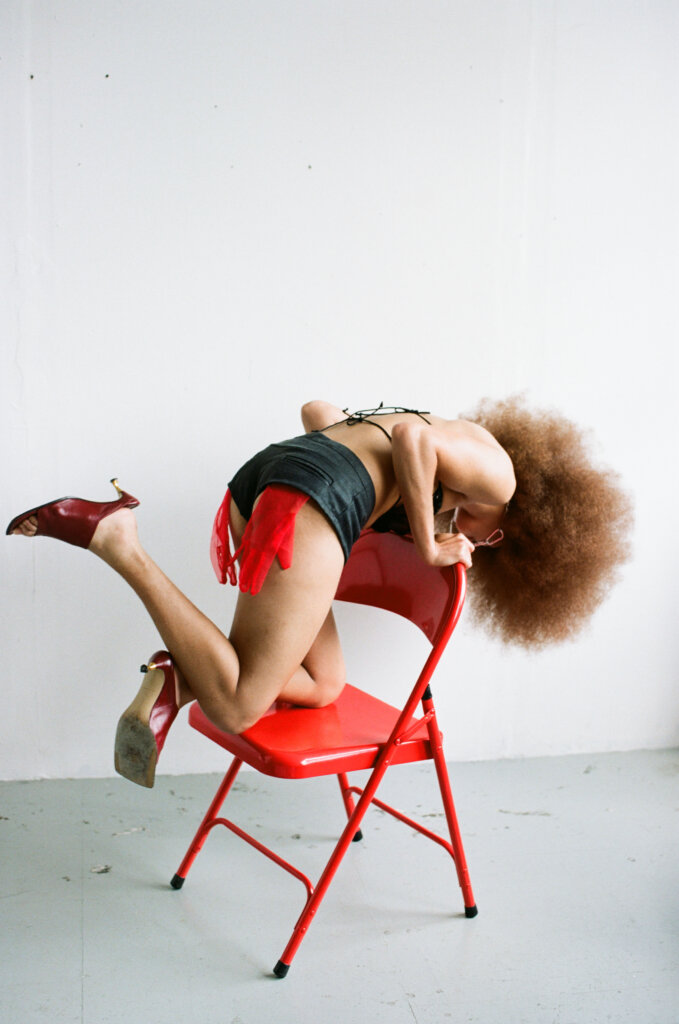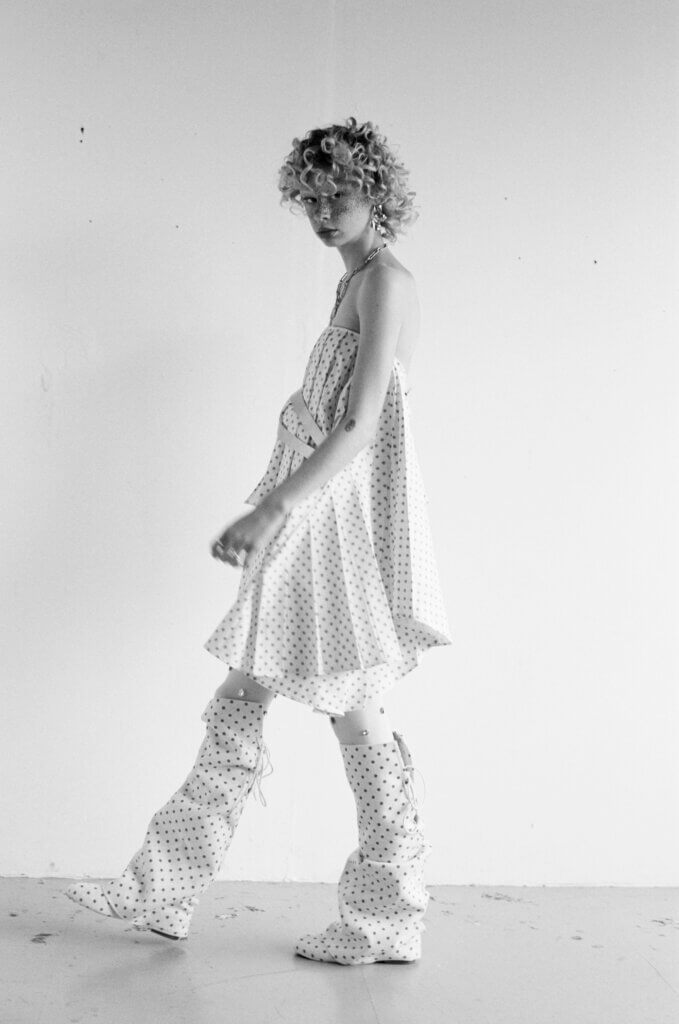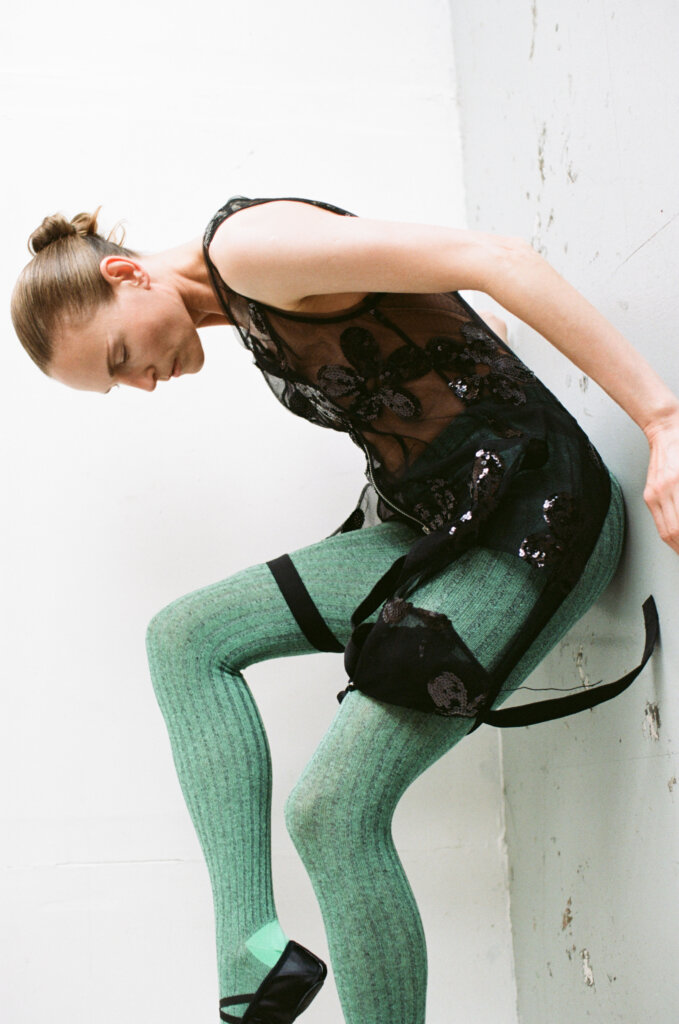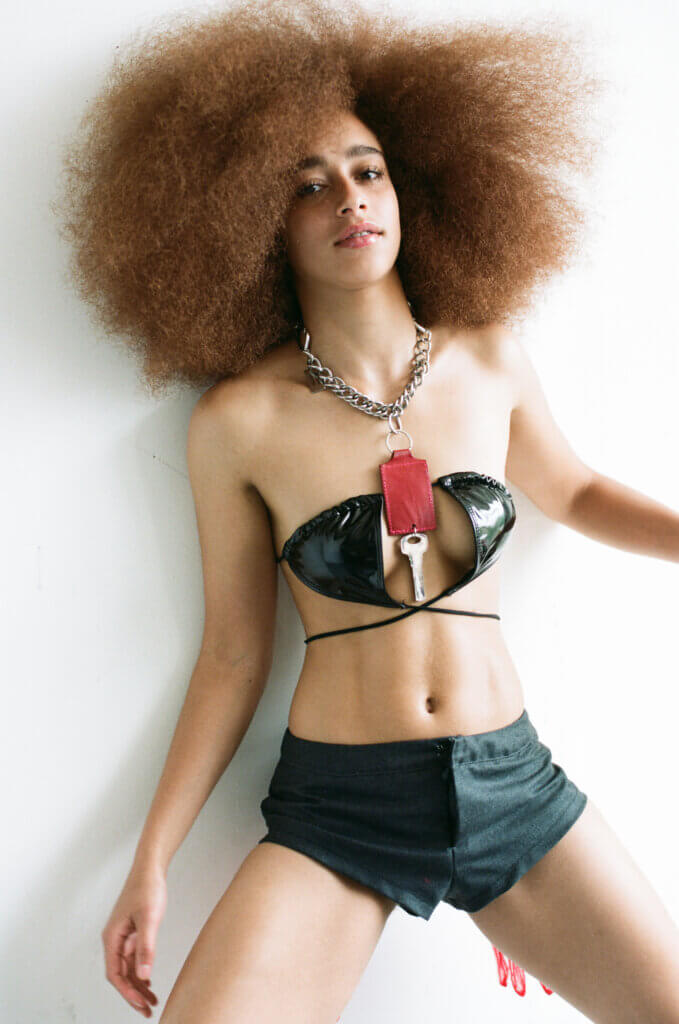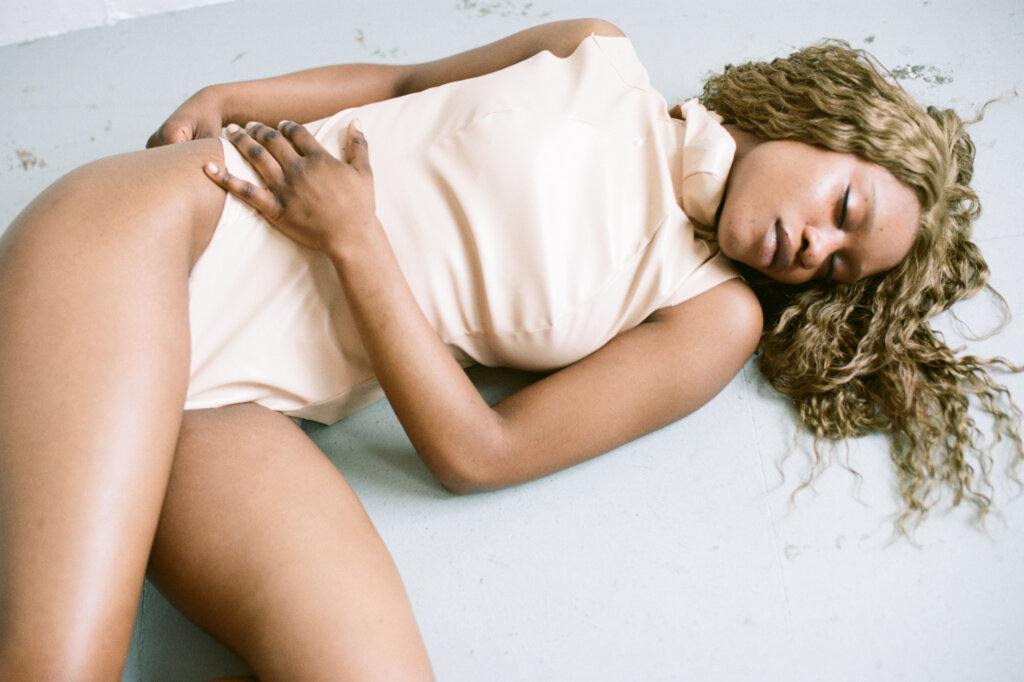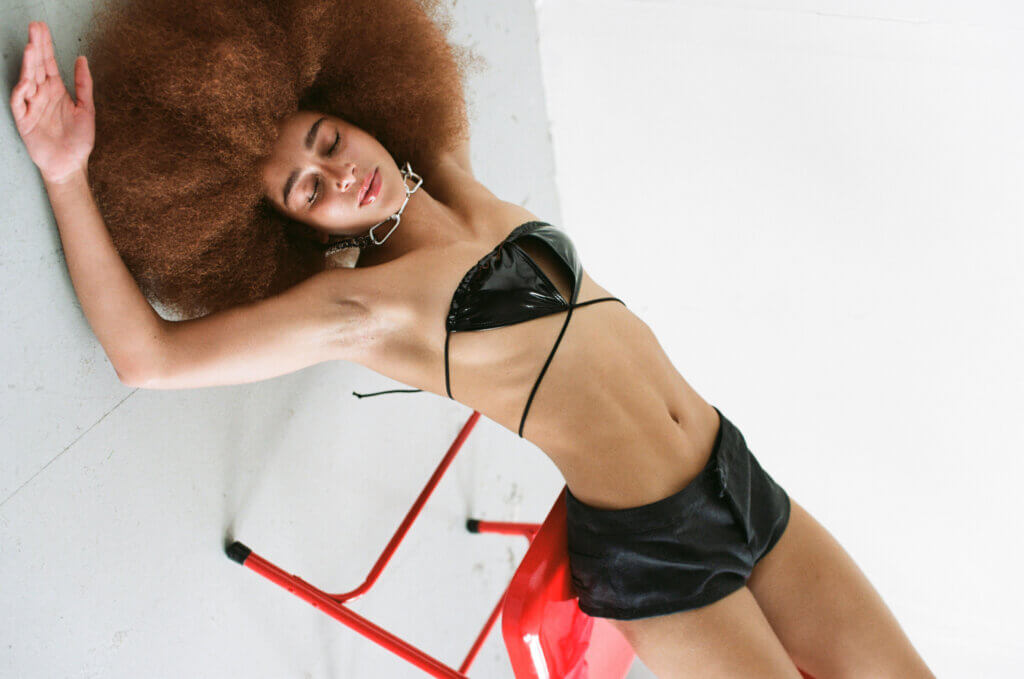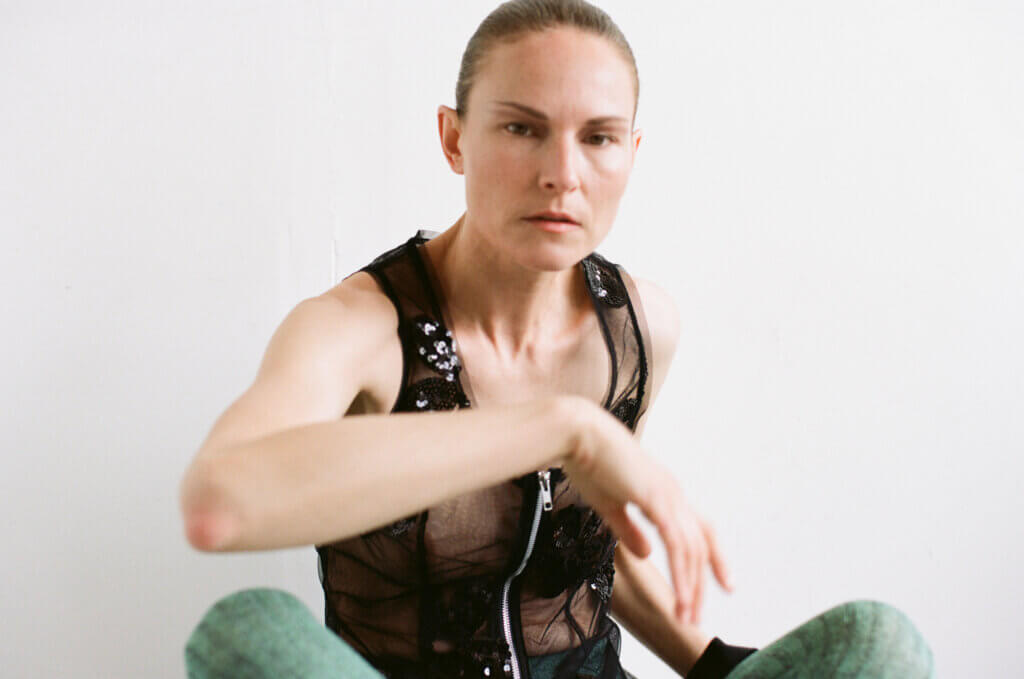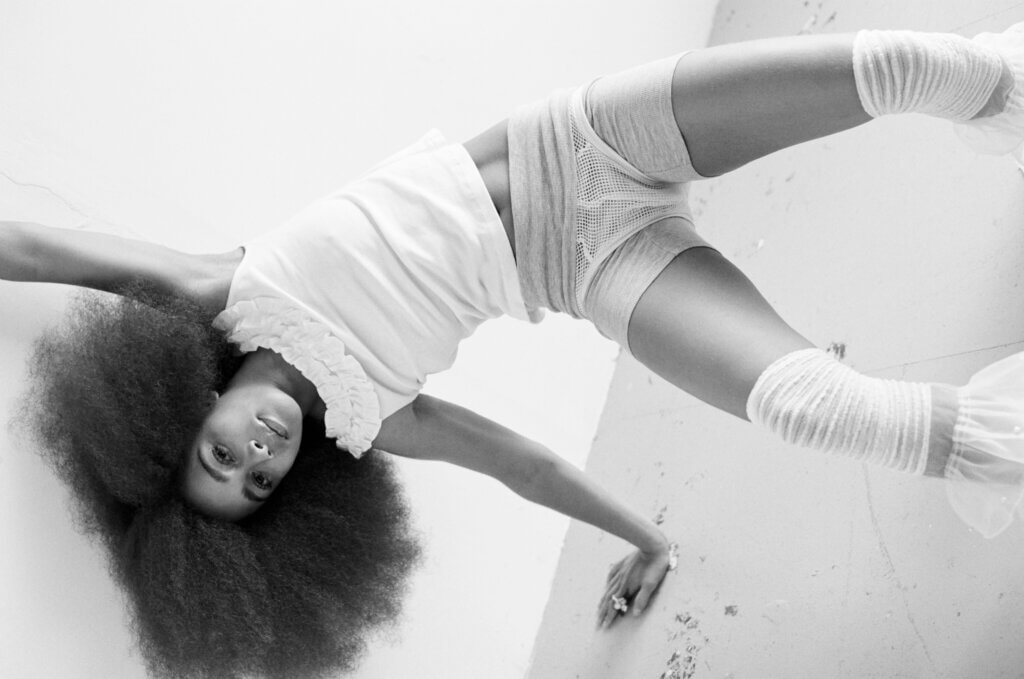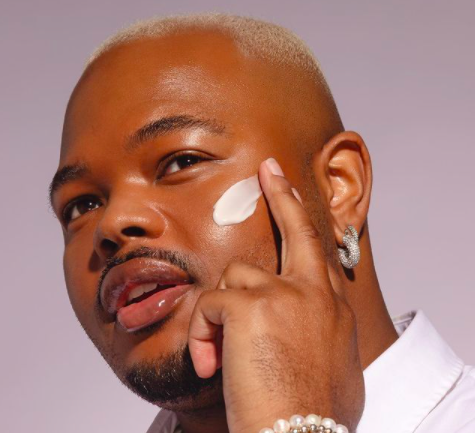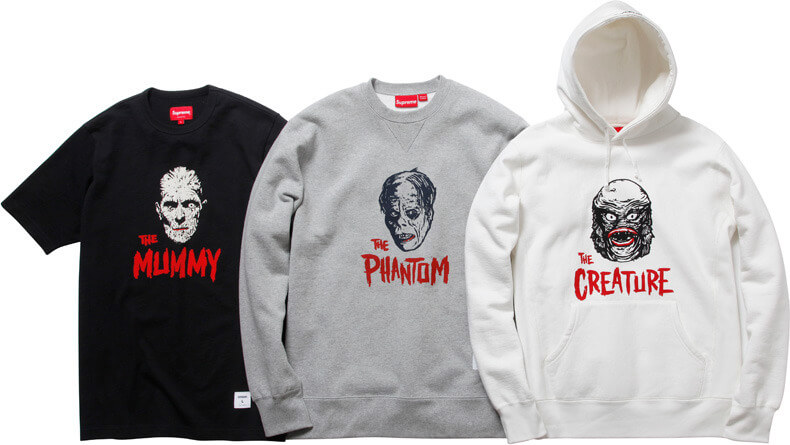A white wall, crumpled bedsheets, a red chair – a simple background that lets the bodies moving through the pictures speak for themselves. Xanthe Hutchinson’s newest photography series, Bodies In Motion, shows bodies unapologetically pushing, spilling, and taking up space. Radiating a silent power, each gesture is a refusal of passivity, a rejection of stillness.
Xanthe Hutchinson (she/her) is a fashion photographer based in Leeds, UK, where she also teaches as a senior lecturer at Leeds Art University. Her work explores themes of transition and challenges dominant narratives around identity by using analogue techniques and fusing fine art with fashion photography. Xanthe’s focus stems from theories of embodiment and phenomenology, which are reflected in the way her photography celebrates the human form in all its shapes and the in-betweens. We’ve talked to Xanthe about her new series, how she uses photography to amplify silenced voices, and the role of fashion in her work.


Do you remember the first time you picked up a camera? When did you know you wanted to make photography your profession, and what did that path look like for you?
The first time I picked up a camera, I must have been about eight years old. My mum had a little black Kodak that she let me take some shots with, and once I saw the results after they’d been developed, I was completely hooked. It felt alchemic. After I graduated high school, I initially pursued a philosophy degree at Durham, which I absolutely loved. It really paved the way for my thinking around photography later on – the idea of a photograph, its purpose, or what it brings to the viewer. I continued with a second degree in photography and followed up with an MA, which, if anything, made me fall in love with photography even more. I’ve been working freelance since graduating, and it’s the people you meet, speaking with such inspiring and talented creatives, that really motivates me in my career.
You’re a fashion photographer, so I’m curious about your relationship with fashion. What intrigues and excites you about fashion and the way it interplays with your craft?
I think fashion is such an ineluctable medium. It acts on us every day and communicates so much, so instinctively, without words. It’s a barometer for cultural and societal change and is so much more powerful than many would give it credit for. For me, fashion is a way to layer narratives and tell stories visually. It magnifies a person’s character, and you can see that shift in the subject – it’s like a light goes on in their eyes and their bodies when they love their look. Truly powerful to see.


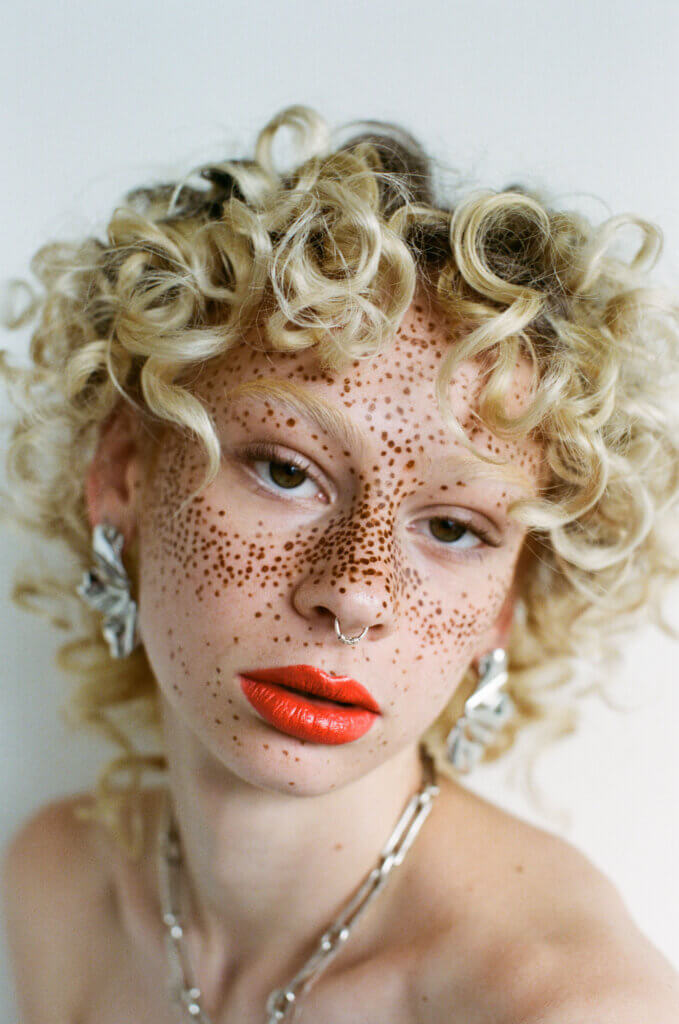
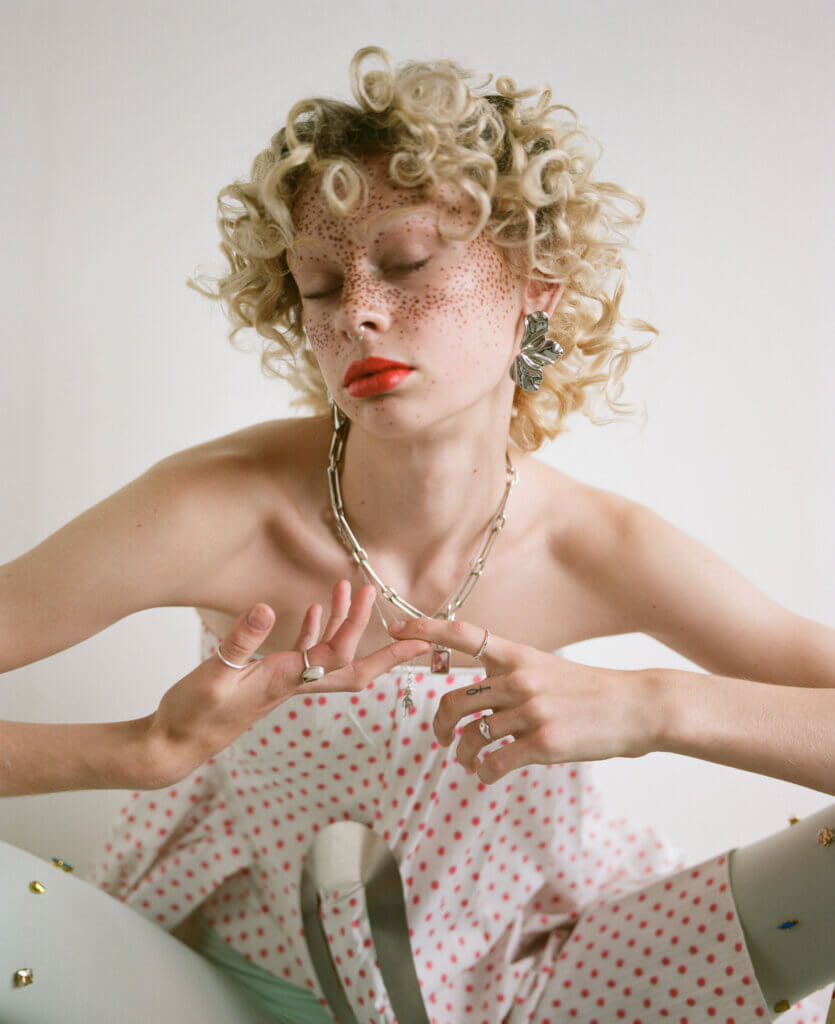
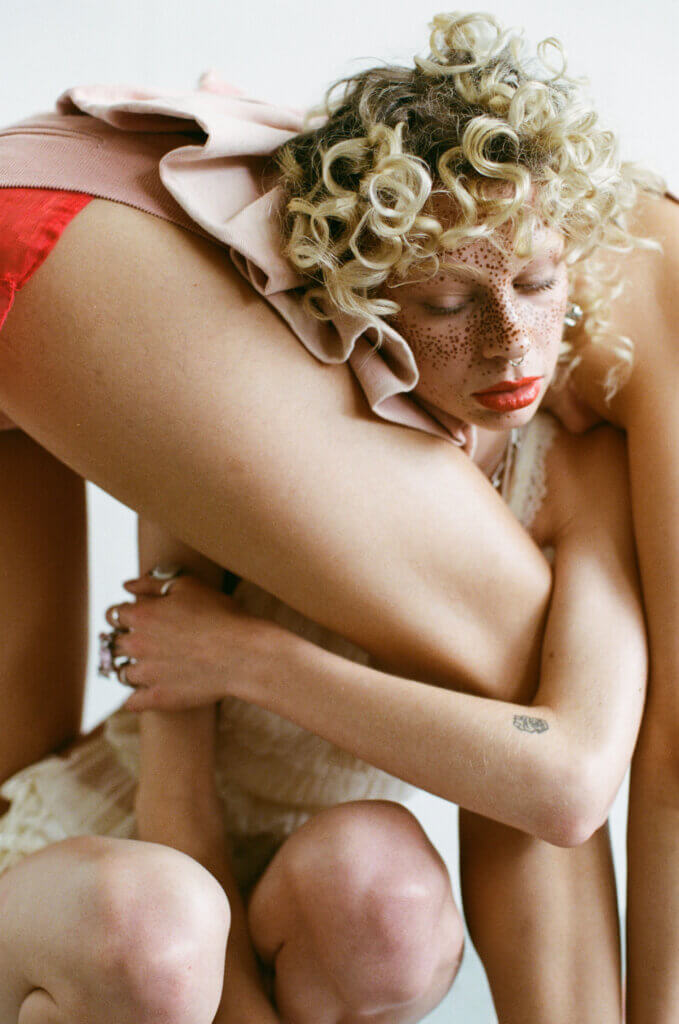
I’ve noticed that there’s a focus on portraying female and queer bodies in your work. Why is that important to you, and how do you create the conditions for the vulnerability and tenderness that pervade your pictures?
I’m very interested in amplifying the voices of people who are frequently silenced. Photography is an interesting medium in that regard because it might prove challenging to communicate these narratives without spoken language, but with a safe, open, and respectful space, people do show themselves beautifully in time. Being patient, asking questions, and learning about the people you are photographing is not just imperative for a truthful portrait but is also a fascinating and revelatory experience for me. I love talking to people, hearing their experiences, and amplifying their presence in a space traditionally associated with exclusivity. I am aware of how vulnerable sitting for a photograph can be, and if the images show that, then that makes it all the more powerful.
Your most recent series, Bodies In Motion, rejects stillness and celebrates movement as resistance. What was your inspiration for this concept, and what was it like to capture continuous movement as a photographer?
For this series, I took inspiration from John Berger’s Ways of Seeing. I wanted to subvert the classical tropes around women’s bodies and instead create something powerful, dynamic, and beautiful. Women have historically been depicted as weak or passive in art, but the truth is, we are incredibly strong. I wanted to explore this tension physically, and the women I photographed all did an amazing job of conveying this.
I’m in awe of the styling of Bodies In Motion and the way the clothes frame the movement. Can you tell us more about the approach behind the styling and how you and stylist Meng Meng Zeng worked together?
We made mood boards and shared ideas as to how the styling could highlight the motion as opposed to restricting it. Mengmeng did a great job translating this by pulling pieces that felt playful but in equal parts potent.
Looks by @fig.fig.ray, @sizumillin, Simone Rocha, @_benjamin_robin, @jj.jellybeanss
For Bodies In Motion, did you choose models that already have experience as dancers or performers? Was there any guidance or music, or did you let them explore whatever movements their bodies wanted to express in that moment?
Sofi is a dancer, I think I gravitated towards her due to her physicality! All the other models had something striking that they brought to the table. Bonnie had such an amazing, fizzing energy, Alesia had this really sinuous tension to her movements. I briefed them on the concept, showed them reference images, and they each took it in a completely different and personal direction.
In 2019, you shot a project with Dazed on trans and non-binary artists in the North of England, and this year, you and stylist Helen McGuckin documented the current state of British goth culture. Could you tell us a little bit about these projects and how you go about documenting different communities?
I’ve always felt a little different and definitely resonate with people who feel they don’t quite fit in. I’m interested in subcultures and people at the margins, so to explore Goth culture with Helen was such a dream brief! We conducted our casting on Instagram and invited people to message us if they were interested in participating. Eventually, we got such a broad range of people, all of which brought very different aesthetics and character to the story. It’s always tricky putting myself in the position of an interloper, but I’m here to listen and look, to really see people and how they wish to be perceived. I love that I get to do that!
Looks by @violagibellinii, Simone Rocha, @fig.fig.ray, @sizumillin, @_benjamin_robin
A year ago, you published your book On Wetness that explores the complicated relationship between women and wetness, youth, and aging. What was it like to work on this book, and what did you take from it?
This was a super interesting personal project, and I took a lot of joy in unpacking the process of aging and how we as a society are so adverse to it. I recently showed the work, and it was actually taken down due to complaints! Isn’t it fascinating that we can’t look at an aging body without feeling offended? I wanted to confront these changes, this sense of redundancy you feel as a woman later in life, and lay it bare. Most of my work is me processing change – I have a desire to freeze moments, and the essence of photography is to do just that. Recently, I’ve really challenged myself to sit in the in-between moments…the unguarded gestures, expressions, and actions that often go undocumented. I think I want to explore that more going forward.
What advice would you give to photographers at the beginning of their careers?
My advice would be: resilience is key. There are a lot of talented photographers out there, but those that succeed are the ones that keep going. Working in fashion, you grow a thick skin fast! You learn to pick yourself up after a rejection and just reframe the experience as a lesson. I had a conversation today with a model, and we were talking about how important it is to make shitty art. Everyone tries and fails; it’s part of the process, and it ultimately pays off.
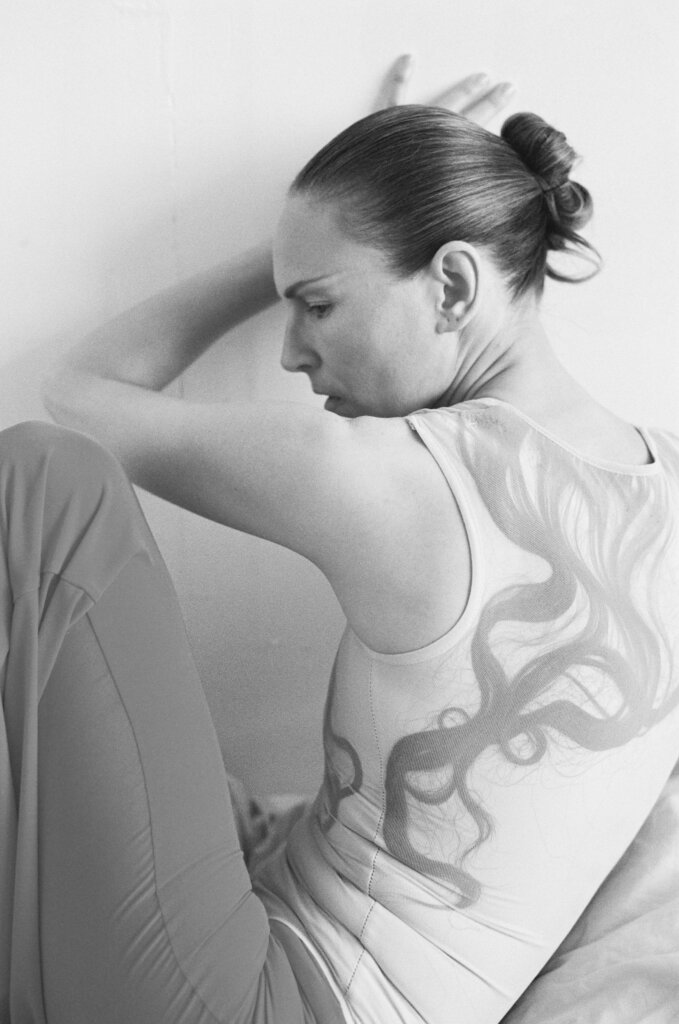

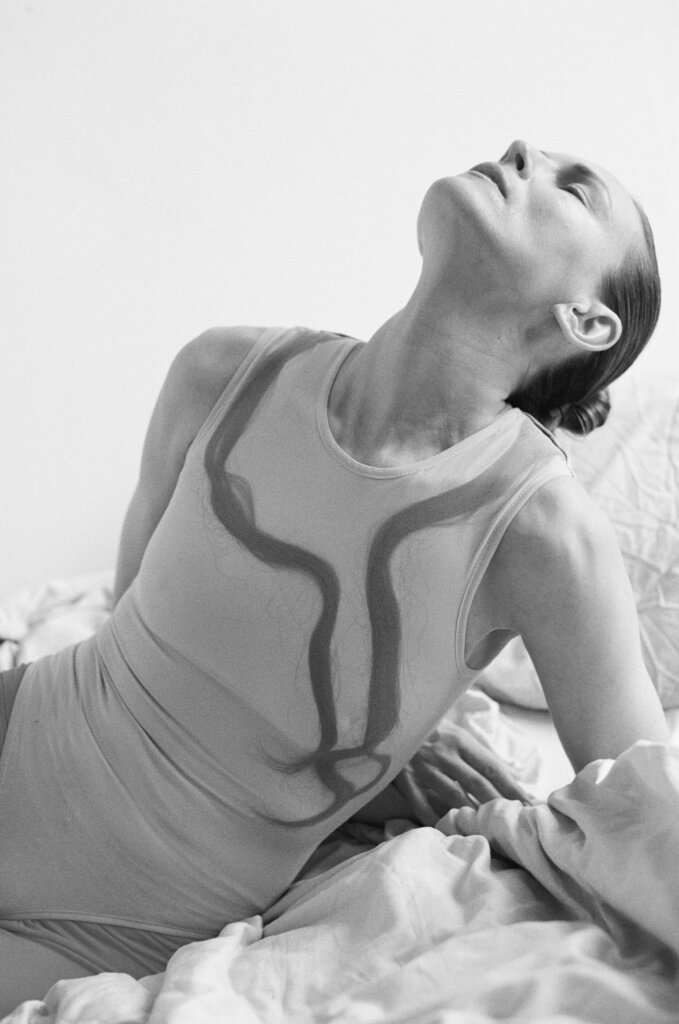
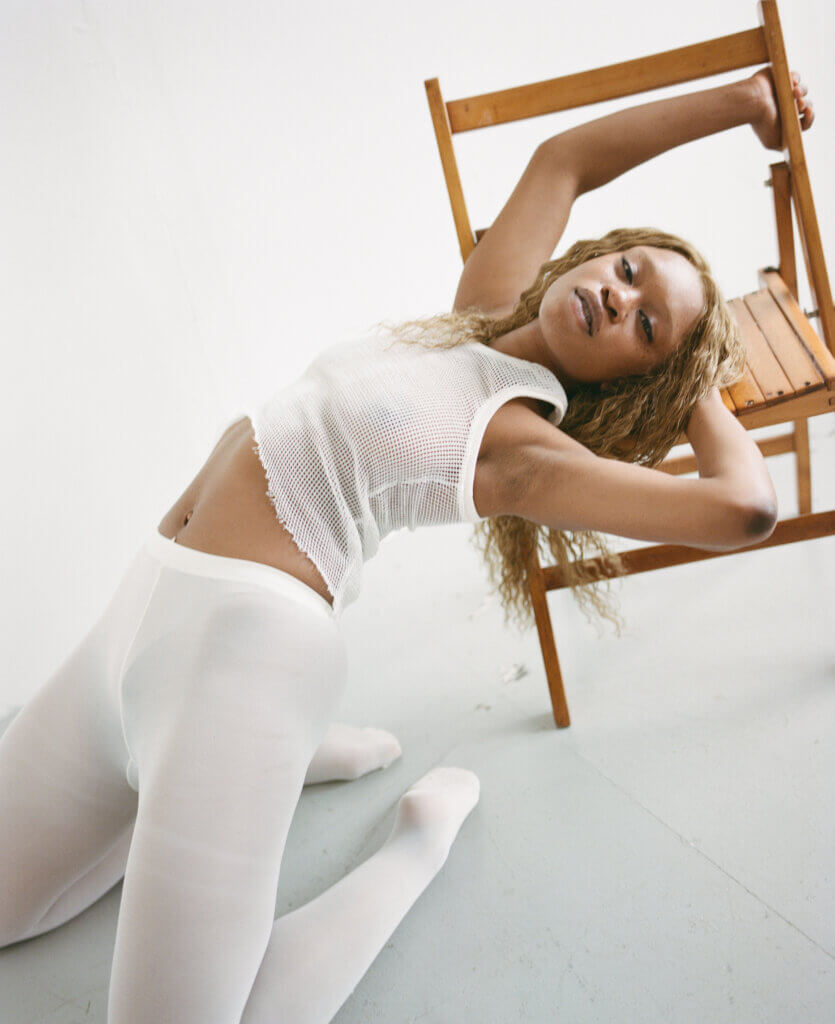
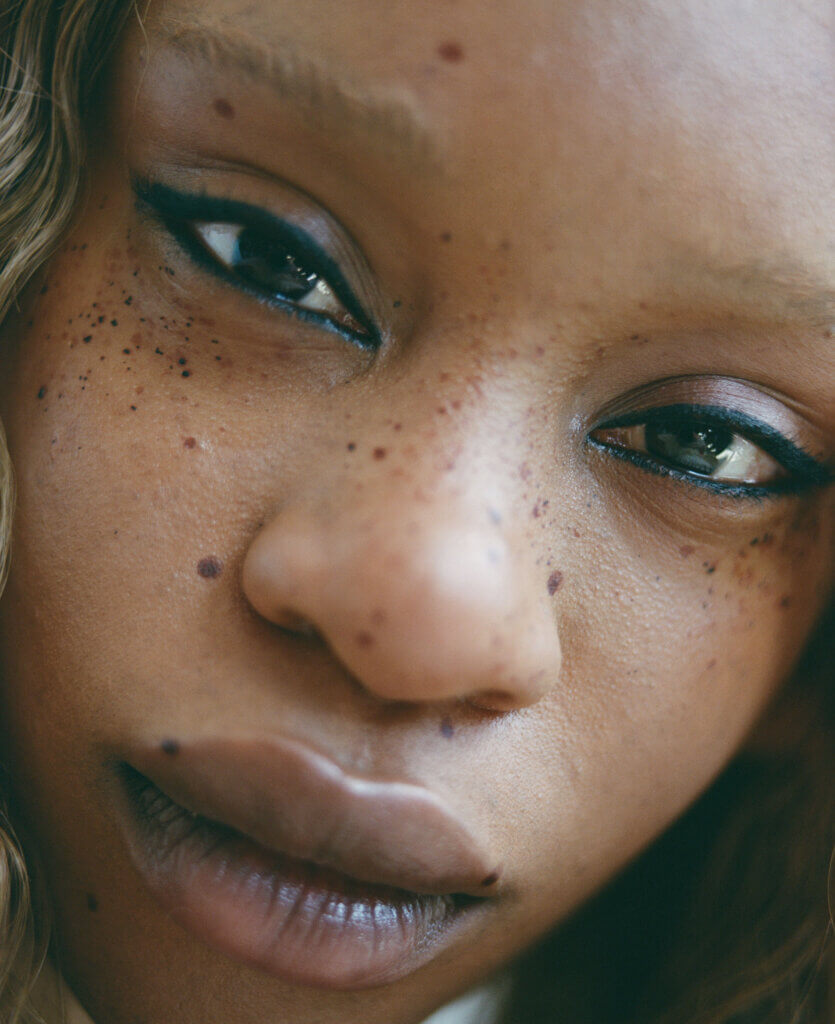
Credits:
Photography – Xanthe Hutchinson
Styling – Meng Meng Zeng
Makeup – Velta Berzina
Makeup assist – Phoebe heard
Hair – Linnéa Nordberg
Hair assist – Fabien Picot
Photo assist – Ellie Grist
Models – Debbie via Anti
Bonnie via Models1
Alesia via Premier
Gwen via Imm
Sofia via Revolt
Editor – Janice Faith Heinrich
Jewelleries – Chopova Lowena, @xsalis.studio
Fashion – @violagibellinii, Simone Rocha, @fig.fig.ray, @sizumillin, @_benjamin_robin, @jj.jellybeanss








